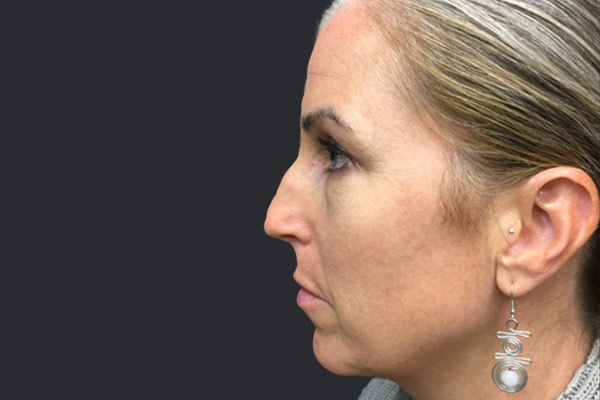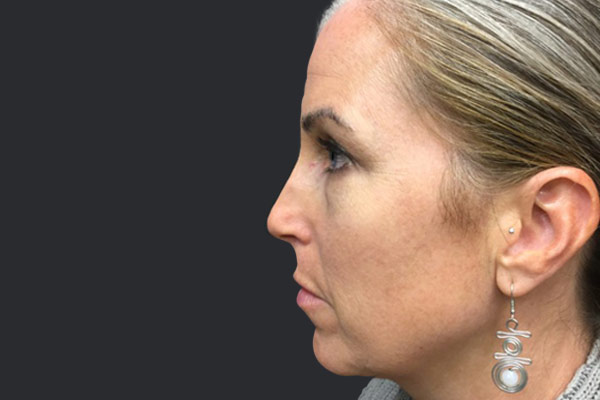Frequently Asked Questions
-
How Can Rhinoplasty Improve My Appearance?
The nose plays a central role in facial harmony and balance. Rhinoplasty can address various concerns related to nasal proportions, such as reducing or increasing the size of the nose, reshaping the bridge or tip, refining the nostrils, or correcting asymmetry. By making these precise changes, rhinoplasty can bring the nose into better proportion with the rest of the facial features, resulting in a more balanced and aesthetically pleasing appearance. -
Are There Any Potential Complications Associated with Rhinoplasty?
As with any surgical procedure, rhinoplasty carries potential risks and complications, although they are uncommon. These include infections, bleeding, adverse reactions to anesthesia, scarring, asymmetry, and dissatisfaction with the results. Choosing an experienced board-certified plastic surgeon like Dr. Pablo Prichard greatly reduces the likelihood of complications. -
Who Should Perform Rhinoplasty?
It is essential to choose a board-certified plastic surgeon with a great deal of rhinoplasty experience. These surgeons have undergone extensive training and have acquired the surgical expertise necessary to navigate the complexities of the procedure. Your rhinoplasty surgeon must be skilled in executing precise techniques, such as cartilage reshaping, osteotomies (controlled bone cuts), and suturing. Each individual’s nasal anatomy is unique, and the surgeon must have a deep understanding of nasal anatomy variations and how they can impact the surgical approach. The surgeon must consider the patient’s facial features, ethnicity, gender, and individual preferences to create a harmonious outcome that blends well with the overall facial appearance. The surgeon must have expertise in diagnosing and treating functional issues to improve nasal breathing while maintaining or enhancing the aesthetic appearance. The surgeon must have an eye for detail, a thorough understanding of facial aesthetics, and the ability to translate the patient’s desires into a surgically feasible plan. -
How Can Rhinoplasty Improve Nasal Function?
Rhinoplasty can improve nasal functionality in a number of ways:- Correcting a Deviated Septum – A deviated septum, where the nasal septum (the cartilage separating the nasal passages) is off-center or crooked, can lead to breathing difficulties. Rhinoplasty can address this issue by straightening and realigning the septum, allowing for improved airflow through the nasal passages.
- Nasal Valve Repair – The nasal valves play a crucial role in regulating the flow of air through the nose. Structural abnormalities or weak cartilage in the nasal valves can cause nasal obstruction. Rhinoplasty can strengthen and repair the nasal valves, leading to better nasal function.
- Turbinate Reduction – The turbinates are structures inside the nasal passages that help warm and moisturize the air we breathe. When the turbinates are enlarged or inflamed, they can obstruct airflow. Rhinoplasty may involve reducing the size or repositioning the turbinates to alleviate nasal congestion and improve breathing.
- Nasal Tip Modification – In some cases, a nasal tip that is too bulbous, drooping, or lacking support can obstruct the nasal passages. Rhinoplasty can refine and reshape the nasal tip, providing better clearance for nasal airflow.
-
Is Rhinoplasty Right for Me?
Ideal candidates for rhinoplasty are individuals who are in good overall health, have realistic expectations about the results, and are bothered by specific aesthetic or functional concerns with their noses. It’s important to have a thorough consultation with Dr. Prichard to assess your eligibility for the procedure. -
What Can I Expect During a Rhinoplasty Procedure?
Rhinoplasty is typically performed under general anesthesia. The surgeon will make incisions, either inside the nostrils (closed rhinoplasty) or along the base of the nose (open rhinoplasty). Through these incisions, they will reshape the nasal structures, which may involve removing or shaping bone, cartilage, or soft tissue. Once the desired changes are made, the incisions are closed. -
What Can I Expect After Rhinoplasty?
During recovery from rhinoplasty, you can expect some swelling, bruising, and mild discomfort. Nasal splints or packing may be used to support the healing process. Most individuals can return to work and regular activities within one to two weeks, although strenuous exercise should be avoided for a few weeks. The final results will gradually become apparent as the swelling subsides over a period of several weeks to several months. Following all post-operative instructions diligently will help the swelling ameliorate sooner, revealing the full results. -
Are the Results of Rhinoplasty Permanent?
The results of rhinoplasty are generally permanent. However, it’s important to understand that the nose can still undergo subtle changes associated with aging over time.


